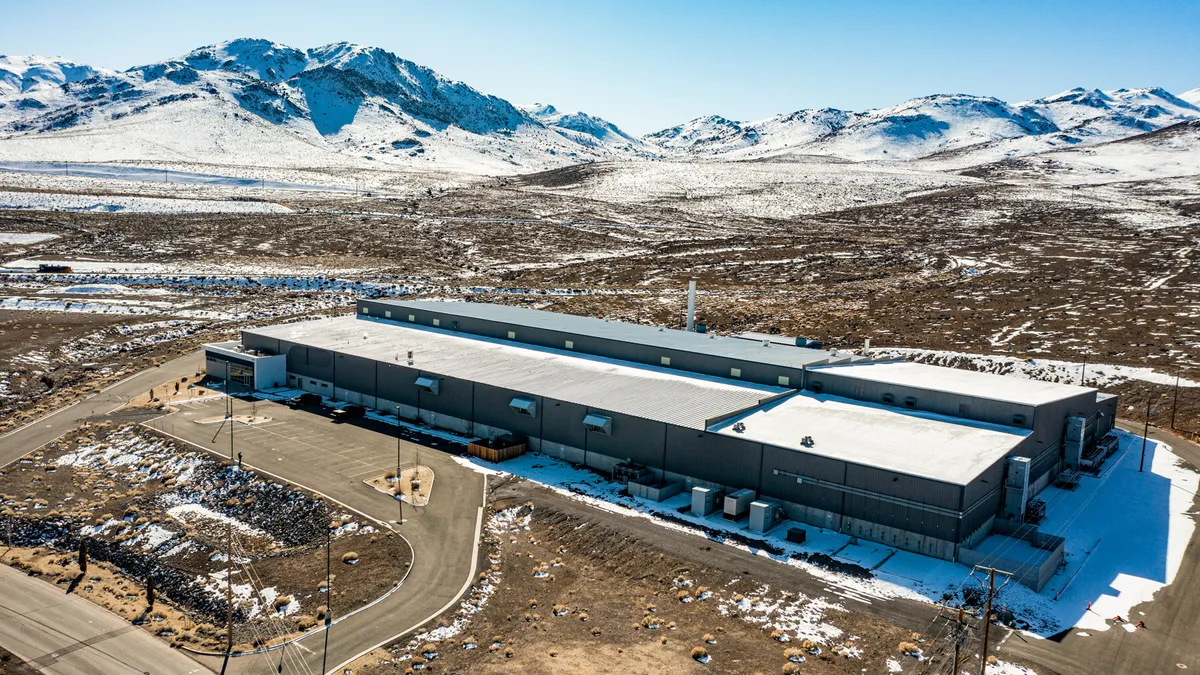Texas is a place where things are big. That includes energy storage.
But just how big that market could be, at least for transmission and distribution deferral projects, could depend on a pending case before the Public Utility Commission of Texas (PUCT).
In an Oct. 13 Proposal for Decision, Administrative Law Judge Stephanie Frazee backed a proposal for two T&D deferral storage projects, but with reservations. She noted that both sides presented “defensible arguments,” but also that the proposal breaks new ground on several issues that could benefit from clarification. The commission is scheduled to take up the case at a Dec. 6 open meeting.
Energy storage has already made some inroads in Texas. In March, E.ON North America said it planned to install a 20 MW battery system at two of its West Texas wind farms.
And it's also a market with enormous potential. In 2014, Oncor Electric proposed spending $5.2 billion on energy storage projects. Oncor’s efforts were backed by a Brattle Group study that found that installing as much as 5 GW of grid-integrated, distributed energy storage would be the most cost effective way for the Texas to address issues about integrating renewable energy into its grid.
Oncor’s plans didn’t pan out. The legislation the utility hoped would smooth the way for utility ownership of energy storage never made it off the drawing board. But now, another Texas utility, AEP North Texas (TNC), an affiliate of utility giant American Electric Power, has plans for energy storage and is pressing ahead with a case now before the PUCT.
Inside AEP's proposal
In September 2016, AEP proposed the installation of two lithium-ion battery systems as an alternative to traditional T&D upgrades. The estimated cost of the two battery systems is about $2.3 million ($3.4 million including eventual battery replacement costs), which is substantially less than AEP’s $11.3 million to $22.5 million estimate of what it would cost for traditional transmission upgrades.
AEP has proposed installing a 1 MW, 2 MWh lithium-ion battery system at its Bush Knob substation in Woodson and a 500 kW, 1,000 kWh battery system in Paint Rock. Both are small communities with populations of less than 300 people.
In a filing with the PUCT, AEP said the Woodson batteries would be used to provide power to customers during outages and would cost about $1.6 million compared with traditional T&D upgrades that would cost about $5.3 million.
The Paint Rock facility would be used to provide power to future additional load on the Paint Rock substation that exceeds the substation’s 1 MW rated capacity. AEP says the Paint Rock installation would cost about $700,000, compared with T&D upgrades that would cost between $6 million and $17.2 million, depending on whether the transmission or distribution system is upgraded.
The issue at hand is specific to Texas power sector, but it is an issue shared in many states that have restructured their electric power sectors. In restructured states, distribution utilities are not allowed to compete in the either the retail power market or in the generation side of the market.
Those rules were written before energy storage began to become a viable option for applications such as T&D deferral, peak shaving and the integration of renewable energy. Energy storage, however, does not fit neatly into the categories used in restructured states. It can be both load and generation. That creates problems, even if the storage facility is designed to address issues that fall within the scope of traditional distribution utility activities such as T&D investment.
Those issues are “definitely going to be a challenge” in other restructured states, Ravi Manghani, director of energy storage at GTM Research, told Utility Dive. But even in some of those states, PUCs are already giving green lights to utility storage projects, he says.
Especially among utilities, T&D deferral is emerging as one of the chief benefits of energy storage. In a recent report, Navigant research estimated that energy storage for T&D deferral would grow from 332 MW in 2017 to 14,325 MW in 2026.
AEP claims its Texas storage projects would yield $8 million in savings over traditional T&D investments, savings it says could be shared by all its customers.
Opponents to AEP’s plans say the proposed storage projects would cross the line between the competitive and regulated portions of the Texas electricity market by allowing a distribution utility to participate in the energy market when charging and operating as a generation source after discharging.
All those opposed say...
Referring to the Paint Rock project, Luminant noted that AEP’s proposed use of the batteries is “tantamount to peak-shaving and will result in the distortion of competitive market signals … because ERCOT would not be dispatching generation to serve Paint Rock load.”
Another key issue in the case is AEP’s proposal to treat the energy used to charge the batteries as unaccounted-for energy (UFE), which falls outside the ERCOT market.
The generators argue that even though the energy used to charge the batteries would be treated as UFE, it would still come out of the market and it would have to be replaced. Additional generation would have to be paid for by all ERCOT customers, the generators argue, not just the customers benefiting from the batteries or even all of the customers in AEP’s service territory. They say the use of that energy means that AEP would be participating in the wholesale power market in violation of Texas rules.
The ALJ noted, however, that although the cost of the UFE used by the batteries would be imposed on ERCOT customers, the same would be true of the cost of transmission upgrades, and they would be significantly more costly.
Overall, opponents to AEP’s storage projects are concerned about the effect the widespread installation of batteries would have on the Electric Reliability Council of Texas (ERCOT). They argue, for instance, that the proposed Paint Rock facility would have negative effects on the competitive market by causing displacement of market generation, price suppression, and distortion of scarcity price signals.
Tesla, arguing in support of AEP, said the project would have “a minuscule-to-no effect on the market” with a total increase in UFE in ERCOT of less than 0.01%.
ALJ Frazee agrees that that the proposed batteries may affect the market, but noted that is a “policy question to be determined by the Commission rather than a strictly regulatory or statutory determination, as the applicable statutes and regulations do not speak directly to this issue.” Likewise, she did not find anything in the applicable statutes or rules directly prohibiting treatment of charging energy as UFE.
Opponents of the AEP projects include generators such as Calpine, NRG Energy and Luminant, as well as the Texas Office of Public Utility Counsel, Texas Industrial Energy Consumers, the Alliance for Retail Marketers, and the Golden Spread Electric Cooperative. Tesla is the only intervening party that supports AEP’s position.
The ALJ was clear that AEP’s operation of the proposed batteries would not violate Texas’ prohibition against electric utilities providing competitive energy services on the consumer side. She also found that the batteries do not meet “the definition of generation assets under the letter of the law.” But she noted that the subject is open “to more than one interpretation, and the policy concerns associated with the batteries potentially displacing traditional generation dispatch may shape the way the law is interpreted.”
In conclusion, Frazee recommended approval of AEP’s storage proposal, arguing that the law can be interpreted to allow the proposal, AEP's customers would benefit from increased reliability, and that “the Commission has previously indicated an interest in approving battery facilities as non-generation facilities.”
If the commission follows the ALJ’s recommendation, it could encourage similar projects in Texas, but the ruling would likely have limited effect outside the state, Manghani says. Unlike other states in the union, Texas’ electric power sector does not fall under federal jurisdiction.
The effect of the PUCT’s approval could even be limited within the state. As Frazee noted, approval of the battery projects could lead to more battery installations that “eventually could have a discernible impact on the ERCOT market.” For that reason, she recommended that if the PUCT approves AEP’s proposal, “the Commission limit its approval to this Application.”
AEP could have more projects like Paint Rock and Woodson in store, spokesman Larry Jones told Utility Dive, but “right now we are focused on the cases before us.”
A previous version of this article misstated the amount of MW that T&D deferral would grow.





















